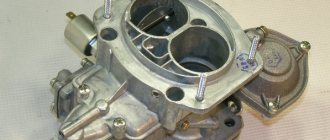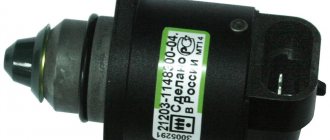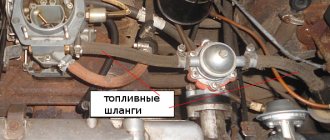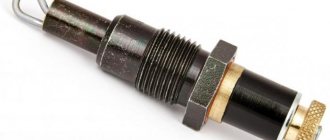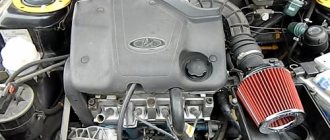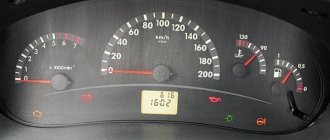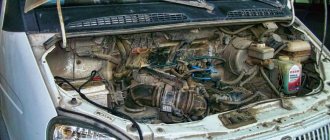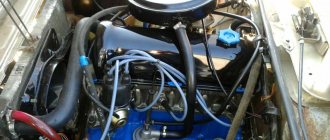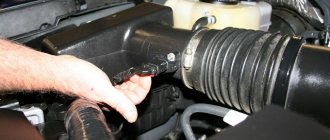Many car owners remember the time when mainly Zhiguli and Muscovites drove along the country's roads. Their key characteristic was that it was very easy to carry out minor repairs or adjust certain parameters, only armed with a small set of tools. However, the difference between those cars and their modern counterparts was that they had a carburetor fuel supply system. She didn't use electronics, so everything was regulated mechanically.
Idle speed: what is it?
In all devices of a mechanical or electrical operating principle, there is such a thing as idle speed. In simple words, idling is the absence of load, in this case on an internal combustion engine.
The correct operation of the internal combustion engine is shown, in many cases, by the behavior of the engine at idle, that is, vibration in idle mode and the noise of the engine (there are no noise jumps from louder to quieter). If these indicators are stable, this is considered normal engine operation at idle speed (idling speed).
Troubleshooting
It is not difficult to understand that the problem is in the sensor; for this you do not need to go for expensive diagnostics. There are visible indicators that help determine this breakdown:
There are several solutions to this problem:
But before we decide what will be necessary in this particular case, we first find out whether it can be repaired. In any case, for accurate diagnosis, the regulator must be removed. Below is a picture that, to simplify the search, will show what the idle speed sensor looks like.
High engine speed at idle: injector.
The differences in the engine operating modes at idle speed and operation under load are that in the idle mode, the air into the combustion chamber is not directed through the throttle valve, that is, the throttle valve is closed.
For a large number of cars with internal combustion engines, normal fuel consumption at idle is considered to be 600-1000 rpm. However, such problems are observed in many cars - these are increased idle speeds on a warm engine, this is from 1500 rpm and more.
Particularly unpleasant-to-hear engine operation at idle is the floating operation of the engine. When the internal combustion engine “floats” at 20 rpm, it either jumps to 2000 rpm or drops to 700 rpm.
The appearance of a floating idle and consistently high speed on a hot engine arises due to the same reasons.
For injection engines, the reasons for high speeds and floating idle speeds are improper air supply and enrichment or leanness of the mixture. The speed depends on the air supplied to the cylinders. Wide open throttle forces a lot of air into the intake manifold. After which, the electronic control unit (ECU) determines how much air has been supplied, determines how much the throttle valve is open (at what angle), and also determines the necessary temperature parameters, and from here it decides how much gasoline should be supplied. If the electronic control unit, by due to the malfunction, it will not be able to determine how much air has passed through the throttle valve, then the controller will raise the speed by enriching the mixture, that is, increasing the fuel supply. If more fuel is supplied and there is still additional air, which the ECU does not take into account, then the mixture becomes lean, which will cause unstable idling of the injector and may stall.
Why adjust the speed XX?
Idle speed is indispensable when you are in a traffic jam or standing at a traffic light, for example. If it weren’t for it, every time the car would have to be started again after a two-second stop. In order for the engine to operate optimally, at a sufficient number of revolutions and with sufficient gasoline consumption, it is necessary to adjust the idle speed about twice a year or if problems arise.
However, you should not wait until problems reach catastrophic proportions. It is easier to prevent any problem than to solve it. In order to adjust the speed control yourself, it is advisable to have at least a little experience in car repairs, otherwise it is wiser to turn to specialists. Take care of your car, it will work in your favor one day.
High engine speed at idle: carburetor.
A carburetor engine is simpler than an injection engine in terms of do-it-yourself repairs. There are different carburetors, but SOLEX is considered the best. You can adjust and configure the SOLEKS carburetor yourself. High idle speeds in such engines occur due to a malfunction in the metering device.
Reasons for increased speed in an engine with a carburetor:
- The idle speed is not set correctly. To adjust the idle speed, the carburetor has a special idle adjustment screw. Rotation of this screw either enriches or leans the fuel mixture.
- The air damper is not able to open all the way.
- Due to defects or incorrect adjustment of the actuator, the damper cannot close completely. This is the valve that is located in the first chamber of the carburetor.
- Accumulation of fuel in the carburetor chamber where the float is located. Exceeding the fuel level can cause an increase in speed and create jumps in idle speed.
Procedure
To work, we need a laptop and a diagnostic cable.
Laptop
A laptop or tablet computer running a desktop version of the Windows operating system, as well as special software that is designed specifically for your car brand. Of course, you can connect a desktop computer, but then be prepared to take it outside, directly to the hood of the car.
Diagnostic cable for connection to the ECU
You will also need to purchase a cable to connect the on-board computer to the laptop. As a rule, these cables are divided into several main types, which do not differ very much from each other. Just decide which version of the connector is used in the car. In the oldest models this is the first version, and in newer ones this is the second version of the connector. The port is shaped in such a way that you will not be able to connect it incorrectly.
ELM-327 (bluetooth) - the most popular diagnostic cable among car enthusiasts
ELM-327 (wired version) is an equally popular diagnostic cable among car enthusiasts
As soon as the connection to the on-board computer is completed, in the program running on the laptop, you can view all the parameters of the vehicle’s operation, as well as any errors that arose during the process. Error codes can be found in the documentation accompanying the program or on the Internet.
If necessary, new firmware can be installed on the on-board computer. This is done using the capabilities of the same diagnostic program.
Conclusion.
If the engine is not running stable at idle speed, during surges, or if high speeds persist for a long time, you should first carry out diagnostics for air leaks.
So, the reasons characteristic for increasing injector idle speed are as follows:
- TPDZ;
- XX regulator;
- engine temperature sensor;
- the mechanism for opening and closing the throttle valve (gas pedal cable if the gas is mechanical);
- intake air intake.
Gasoline engines can be equipped with a carburetor or fuel injection system. In the case of a carburetor, it is well known that during operation this system requires periodic adjustment of the idle speed. As for the injector, such a power system operates under the control of the ECU, meaning that there is no need for additional configuration.
However, in practice the situation is somewhat different, since quite often it becomes necessary to adjust the idle speed on the injector. Problems manifest themselves in the form of unstable operation of the internal combustion engine at idle, the speed fluctuates, the engine may stall after starting, overuse fuel if the idle speed is too high, etc.
Next, we will talk about how to adjust engine idle speed on an injection and carburetor engine, and also consider the features and nuances of setting idle speed on engines with the specified fuel supply systems.
Read in this article
Choosing a replacement regulator
On the VAZ-2110 with both 8-valve and 16-valve injection engines, a sensor with catalog number 2112-1148300 is used. Additionally, at the end of the marking there is a prefix consisting of two numbers, for example, 01, 02, 03, 04. This index indicates the manufacturer of the regulator (01 and 03 - “Pegasus”, 02 and 04 - KZTA). When choosing a replacement regulator, pay attention to two nuances - the seal and the height of the needle protrusion above the body. Factory spare parts use a red seal, while counterfeits use a black rubber element. The height of the needle protrusion above the body is 23 mm.
Before installing a new regulator, it is recommended to coat the sealing ring with a thin layer of engine oil to ensure a tight fit of the part in the seat and eliminate the possibility of air leaks.
How to adjust idle speed on a carburetor
Let's start with a simpler dosing system. The main advantage of a carburetor is deservedly considered the ability to quickly service the device with your own hands, using a minimal set of available tools.
To adjust the idle speed in this case, you will need to have several wrenches and screwdrivers. The main task will be to set the speed when the engine is able to operate stably, while the crankshaft speed will be the minimum possible for stable operation of the unit.
Let's look at adjustment using the Solex carburetor as an example. First of all, it is advisable to have a tachometer, which will help determine the crankshaft speed. On some cars, such a device may not be structurally present, while on others it is included as standard and is located on the dashboard.
- So, before starting manipulations with the carburetor, the engine must be warmed up to operating temperature.
- Then you need to press the “choke” all the way, the air damper should be in the fully open position.
- Next, the engine is turned off, after which, on cars without a tachometer, you should connect the external device according to the instructions and recommendations.
In some cases, you can use a multimeter tester. The positive output is connected to output K on the ignition coil, the negative output is connected to ground.
- Now you can start the engine, after which you need to turn on the dimensions, high beams, set the maximum speed of the interior heater fan, electric heated windows, etc. In other words, energy consumers need to be involved. After this, you can proceed to adjusting the idle speed on the carburetor.
As a rule, for most systems of this type, the idle speed is 750 - 800 rpm. It turns out that it is necessary to set the idle speed within the specified limits, and the internal combustion engine must operate stably.
To do this, on the Solex you need to rotate the adjusting screw, which is responsible for the amount of the fuel-air mixture. Upon completion, the crankshaft should rotate at a frequency of 750 - 800 rpm. However, in many cases the adjustment does not end there.
There may be a separate plastic plug on the specified screw, which will need to be removed. This can be done by piercing the plug with an awl, after which a metal hook is inserted into the hole for removal. You can also screw a self-tapping screw into the plug, and then remove the element without much difficulty.
Before starting adjustments with the XX quality screw, you should also check the correct ignition setting (ignition timing, ignition timing), the condition of the spark plugs and spark plug armor wires. You will also need to eliminate the possibility of third-party air leaks. At the same time, you need to be prepared for the fact that adjustments will need to be repeated several times until the desired result is obtained.
The whole process looks like this:
- At the very beginning, you should rotate the quality screw with a flat-head screwdriver so that the crankshaft speed increases to the maximum. To do this, you need to carefully turn the screw clockwise or counterclockwise. The main thing is to find the position of the screw when the XX speed is maximum. This can be determined by the tachometer or by ear (in the absence of instruments for determining the crankshaft rotation speed).
- Now you can begin to turn the mixture amount screw, ensuring that the speed is at around 900 rpm. Tightening the screw clockwise causes the throttle valve of the first chamber of the carburetor to open slightly, resulting in an increase in engine speed.
If you unscrew the screw counterclockwise, then the damper closes and the speed will decrease. It turns out that you need to find a position for the mixture quantity adjustment screw at which the speed is at around 900 rpm.
- Having set the speed, we move on to the quality screw. The specified screw is tightened so as to obtain 750-800 rpm. If you cannot immediately achieve the desired indicator, you should repeat the setup procedure from the very beginning.
Let us add that when installing a non-standard carburetor on the engine or in case of carburetor repair (cleaning, replacing screws, jets), before making adjustments, you should first completely tighten the quality screw clockwise, and then release it back 3 or 4 turns. Only after this can you proceed to further settings.
Additional recommendations for setting XX on the carburetor
After the setup process has been completed, you should check the operation of the engine not only at idle, but also taking into account other modes. This means that the set of revolutions when you sharply or smoothly press the gas pedal should occur smoothly, without failures or failures. Also, the engine should not stall after the accelerator pedal is sharply released.
Any failures or pauses are a reason to repeat the settings. The first step is to return to adjusting the quality of the mixture, enriching the mixture with the quality screw. With this enrichment, you can raise the speed to 900 rpm. It is worth noting that high-quality and accurate tuning can reduce the overall toxicity of exhaust gases from a carburetor internal combustion engine.
FakeHeader
Comments 31
leave the engine alone =) this is a BSE, slight shaking is normal on it. If the shaking is a little stronger, then first check the oil level, then the spark plugs and so on.
The cure is cleaning the injectors with removal on a stand! See for yourself the amount of dirt, it’s the fault of our valiant advertising gas stations.
I just raised the speed a little and the engine began to jerk less.
The speed is raised with the help of a cord, and not the firmware is changed, I raised it for myself, it seems like there was an effect, but I don’t remember anymore) and the car also twitches at idle, they say that this is normal, but I don’t like it either
I also raised the speed through Vasya, but after about a year everything came back, it somehow works temporarily. Now I just don’t turn off the AC on the climate control and the speed stays on its own, somewhere around 900, there is no vibration, that’s the whole problem)
I don’t turn on the a/c, because the power drops very much and apparently my air conditioner is overgrown with a fungus, a cold is creeping out
The most sensible comments are written below. The rest is some kind of crap!)))
Maybe this post will help? www.drive2.ru/l/6952493/...I solved this problem myself by installing iridium spark plugs - the shaking is almost unnoticeable www.drive2.ru/l/10618436/
for the 1.6 BSE engine this is a normal phenomenon... if you don’t look at the engine running, it doesn’t twitch. most likely it is necessary to “change something in the heads”, and not in the engine =)
This has already been discussed everywhere a thousand times... fortunately there are not many such confused ones =)
I changed the spark plugs. I changed the high voltage wires. I changed the ignition coil.
There is no need to increase the speed, you need to eliminate the cause of the twitching. Look at the spark plug wires and the high-voltage part. It is necessary to treat the cause, not the consequences. I was twitching too, nothing - cured
I had the same problem, I have a 1.8 cdaa engine. I filled it with liquid from LiquiMoly and after rolling the tank, the twitching at idle disappeared, the car began to run smoothly
Adjusting the injection engine and idling
On engines with a fuel injection system, as a rule, malfunctions do not appear immediately and tend to progress gradually. Typically, the driver notices that the car begins to respond to the gas pedal with delays, the speed jumps at idle, gasoline consumption increases, the engine loses power, the power unit may not operate smoothly in different modes, etc.
Various malfunctions can lead to such symptoms, so it is necessary to carry out computer diagnostics of the engine, check the ECM sensors, eliminate air leaks and general problems with mixture formation (lean and rich mixture), dirty injectors and other reasons. If no other deviations are detected, the injector needs to be adjusted. Let's start with adjusting the idle speed on an injection engine.
To adjust the idle speed on the injector:
- disconnect the battery terminals and dismantle the idle air control;
- then the IAC mounting hole is cleaned using compressed air;
- Now you can disassemble the XX regulator, after which its guide bushing is checked. If the bushing is worn out, the element needs to be replaced;
- you also need to check the needle. No wear, damage or other defects are allowed. If deviations are detected, the IAC needle should be replaced;
- then, using a tester, the regulator windings are checked, and if necessary, the contacts are cleaned;
- At the end of the diagnostic and cleaning process, the device is put back, after which the engine operation at idle and other modes is assessed.
Let us add that a number of problems with idle speed can also arise after cleaning the throttle valve, which on many cars not only needs to be cleaned correctly, but also trained. If you don't know how to clean and adjust the throttle valve, we recommend reading about it in our separate article.
We also note that the injector adjustments and the operation of the power system can be influenced programmatically, that is, by connecting diagnostic equipment with special preinstalled programs to the ECM via the OBD connector. Once connected, you can evaluate many parameters of the operation of engine systems in real time, read, decipher and reset possible errors.
Deeper modifications are also possible on the injector, which involve making a number of changes to the ECU firmware. This procedure is well known as engine chip tuning. This setting allows you to change the factory firmware, adapt the control unit to a specific driver and his needs (set the speed to XX, change fuel maps and influence mixture formation, ignition, etc.).
Repair rules
The idle speed regulator is a special executive function that is necessary for the engine to operate in normal mode. If it turns out to be faulty, the indicator that indicates this fault will not light up. This means that identifying the problem can be quite simple. All that remains is to eliminate it as soon as possible.
The regulator is a stepper motor that makes it possible to guarantee a certain level of air flow that bypasses the closed damper.
The flow level is set by the car's electronics. Such a complex system allows the motor to operate as evenly and stably as possible. Also, the electronic system of the machine performs the function of protecting against external factors, because the engine operates normally under almost any circumstances.
What's the result?
As you can see, independent modifications and adjustments to the carburetor are quite possible in a garage. As for the injector, an ordinary car owner without sufficient experience can only check the IAC with his own hands and clean the device, diagnose some ECM sensors, and also read and reset errors if there is an OBD2 adapter.
Please note that any attempts by unprofessional tampering with the ECU firmware can lead to both failure of the controller and consequences for the engine itself. For this reason, adjustment and tuning of the injector should be carried out only in special cases, entrusting the work exclusively to qualified specialists.
Why do you need to clean the throttle valve periodically? How to clean the throttle valve, training and adaptation of the throttle valve after cleaning, useful tips.
Why the engine may have high idle speed. The main reasons for high idle speed on an injection engine and engines with a carburetor.
The engine stalls at idle: what to check. Possible causes of malfunction on engines with a carburetor, injector, and diesel power plants.
At idle the speed “floats”: why does this happen? The main malfunctions associated with idle speed on gasoline and diesel engines.
Floating engine idle speed when cold. Basic malfunctions, symptoms and identification of breakdowns. Unstable idling of the diesel engine.
Causes of vibration and unstable operation of a diesel engine in idle mode. Possible causes and fault diagnosis.
Causes of failure. Node check
The reasons for the malfunction of the XX regulator are breaks in the electrical winding. engine and needle jamming due to dirt or corrosion. But the sensor is not always the “culprit” for missing idle speed. Therefore, before removing and checking the sensor, check its power supply circuit.
For all checks you will need a multimeter. The power circuit is checked with a device set to “voltmeter” mode. Diagnostics is simple - we disconnect the block with wires from the regulator, connect the “negative” probe of the multimeter to ground, and the positive one to the terminals marked with the letters “A” and “D”. With the ignition on, we take measurements. If the circuit is working properly, the readings should correspond to the rated voltage of the circuit. If there is no voltage, you should check the computer and relays responsible for powering the sensor.
To make it easier to check the sensor itself, remove it from the car. To do this, you only need a screwdriver. To remove a part you need:
- Disconnect the on-board network (remove the terminal from the battery).
- Find the regulator (installed on the throttle assembly).
- Disconnect the wiring (after operating the lock).
- Unscrew the two fastening screws;
- Remove the regulator.
The element is checked with the same multimeter, but switched to “ohmmeter” mode. We first connect the probes to terminals “A” and “B”, and then to “C” and “D”. With this measurement, the readings are 50-55 Ohms. Then we connect the probes to terminals “A” and “C”, and then to “B” and “D”. During this test, the ohmmeter shows infinity.
If the readings are correct, there is no break inside the sensor, and its incorrect operation is due to the needle getting jammed.
There is an alternative verification method that does not require the use of measuring instruments. This check is simple:
- Remove the sensor from the car.
- We connect the block with wires back to it.
- We power the on-board network (connect the battery).
- Holding the regulator in your hand, place your finger on it.
- We ask someone to turn on the ignition.
If the element is working properly, when the ignition is turned on, the needle will move, which will be clearly felt by your finger. Needle jamming can be eliminated by washing. For these purposes, use WD-40 or carburetor cleaning aerosol. We use these products to treat the needle and spring. Next, we dry the sensor and check its functionality. If a break in the winding in the regulator is detected or washing does not bring results, we replace the part.
Something else useful for you:


